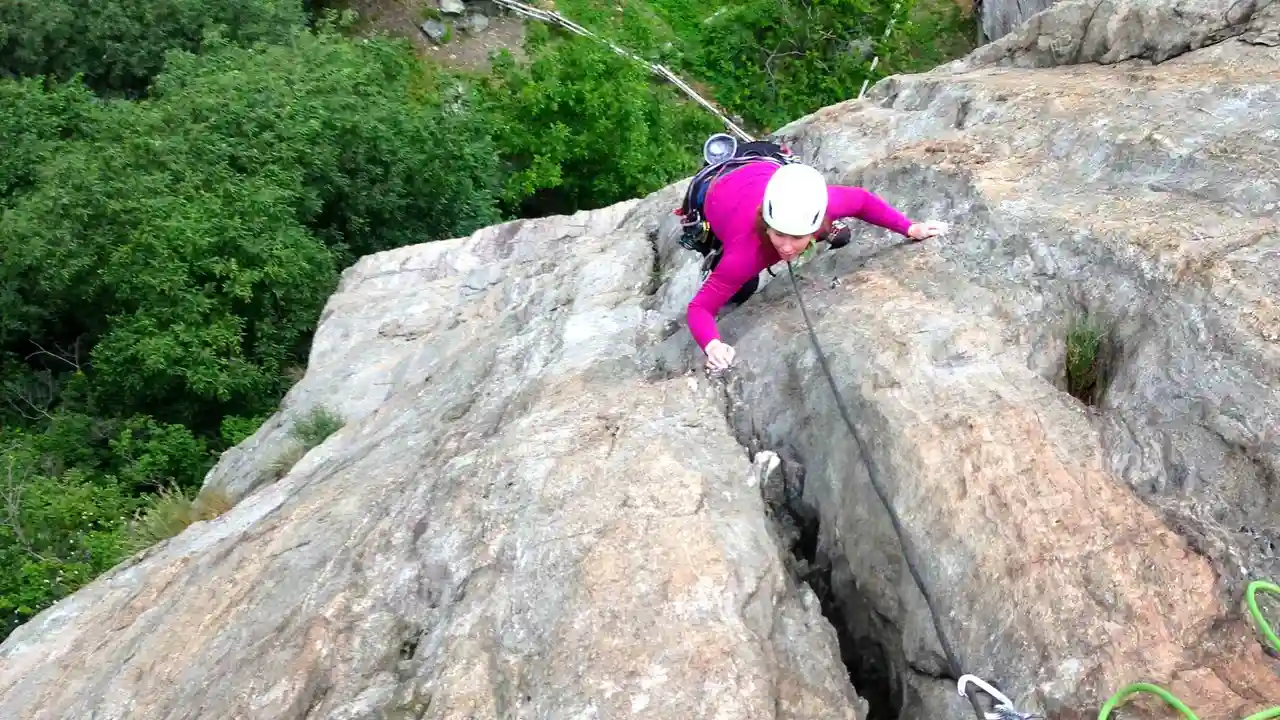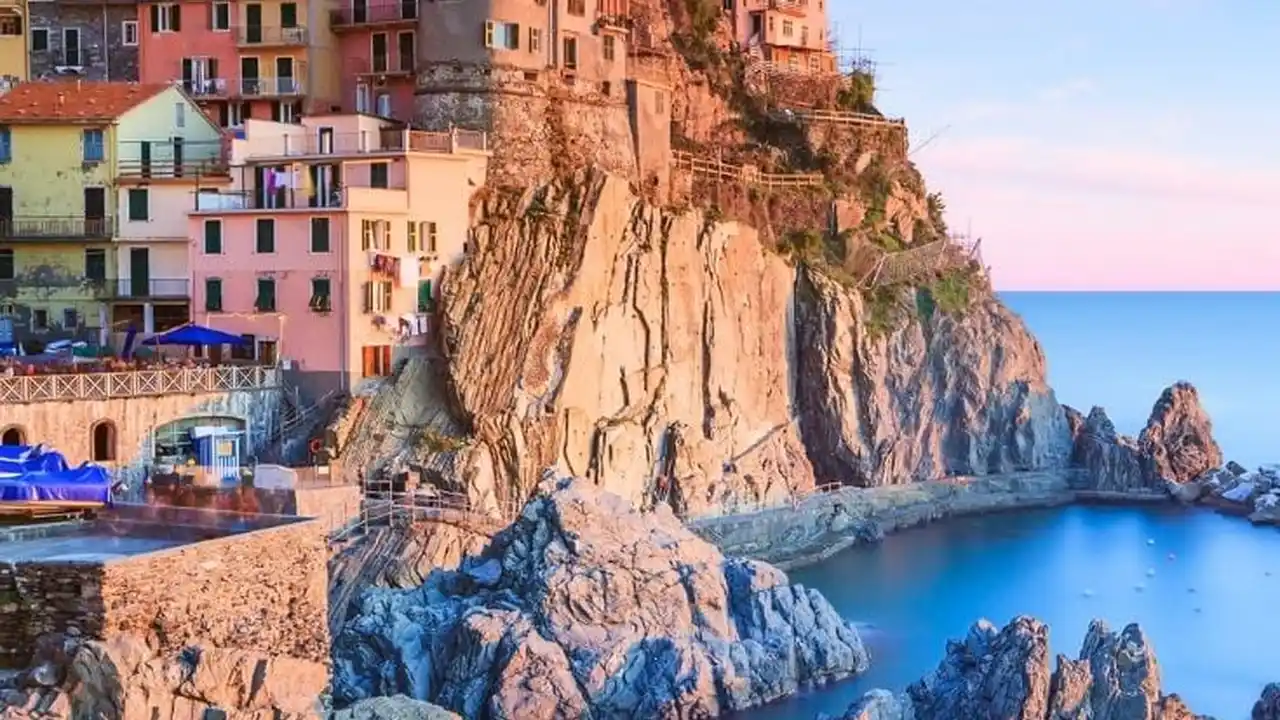Rock Climbing in Italy: A Guide for Climbers
Discover the best rock climbing spots in Italy Learn about different climbing areas routes and safety tips Experience the challenge and beauty of rock climbing in Italy

Introduction to Rock Climbing in Italy Where to Begin
So, you're thinking about rock climbing in Italy? Awesome choice! Italy offers some seriously stunning climbing spots, from the dramatic Dolomites to the sunny cliffs of Sardinia. Whether you're a seasoned pro or just starting out, there's something here for everyone. This guide will walk you through some of the best areas, give you the lowdown on gear, safety, and even recommend a few specific products to get you started. Forget those boring gym walls; let's get you climbing on real Italian rock!
The Italian Climbing Scene A Quick Overview
Italy's climbing scene is vibrant and diverse. You'll find everything from sport climbing and trad climbing to bouldering and via ferrata. The rock types vary widely too, from limestone and granite to dolomite and sandstone. This variety means you can always find a new challenge, no matter your skill level. Plus, the Italian climbing community is super welcoming, so don't be afraid to ask for advice or join a local climbing group.
Top Rock Climbing Destinations in Italy Where to Find the Best Climbs
Okay, let's dive into some specific locations. Italy has a ton of amazing climbing areas, but here are a few of the most popular and highly-rated spots:
The Dolomites Rock Climbing Paradise
The Dolomites are legendary for a reason. This UNESCO World Heritage site boasts towering peaks, dramatic spires, and incredible climbing routes. The rock here is primarily dolomite, which offers a unique and challenging climbing experience. Expect long multi-pitch climbs, exposed traverses, and breathtaking views. It's a truly unforgettable place to climb. Some specific areas within the Dolomites that are popular include:
- Tre Cime di Lavaredo: Iconic peaks offering challenging multi-pitch climbs.
- Sella Pass: A variety of climbs for different skill levels, with stunning views.
- Cinque Torri: A cluster of towers providing a range of sport and trad climbs.
Arco Climbing Near Lake Garda
Arco, located near Lake Garda, is another world-class climbing destination. It's known for its sunny weather, excellent rock quality, and variety of climbing styles. You'll find everything from single-pitch sport climbs to challenging multi-pitch routes. Arco is also a great place for beginners, as there are plenty of easy climbs to get you started. The town itself is charming, with plenty of restaurants, cafes, and climbing shops.
Sardinia Coastal Climbing Adventures
If you're looking for a climbing destination with a beach, Sardinia is the place to be. This island offers stunning coastal cliffs, crystal-clear waters, and a relaxed Mediterranean vibe. The rock here is primarily limestone and granite, offering a mix of sport and trad climbs. After a day of climbing, you can relax on the beach, swim in the sea, or enjoy some delicious Sardinian cuisine. Popular areas include:
- Cala Gonone: Known for its stunning sea cliffs and challenging sport climbs.
- Domusnovas: Offers a variety of climbs, from beginner-friendly to advanced.
- Masua: Features dramatic sea stacks and multi-pitch routes with incredible views.
Finale Ligure Climbing on the Italian Riviera
Finale Ligure, located on the Italian Riviera, is another excellent climbing destination. It offers a mix of limestone and sandstone cliffs, with a variety of climbing styles to choose from. The town is charming, with plenty of restaurants, shops, and a beautiful beach. Finale Ligure is also a great place for families, as there are plenty of activities to keep everyone entertained.
Sicily Climbing on an Island Paradise
Sicily, the largest island in the Mediterranean, offers a unique climbing experience. You'll find a variety of rock types, from limestone and sandstone to volcanic rock. The climbing here is diverse, with everything from single-pitch sport climbs to challenging multi-pitch routes. Sicily is also a great place to explore, with its ancient ruins, stunning beaches, and delicious cuisine.
Essential Rock Climbing Gear What You Need to Get Started
Alright, let's talk gear. Having the right equipment is crucial for safety and enjoyment. Here's a breakdown of the essential items you'll need:
Climbing Shoes Finding the Right Fit for Your Foot
Climbing shoes are your most important piece of gear. They should fit snugly but not be too tight. Look for shoes with sticky rubber soles for maximum grip. Here are a few recommendations:
- La Sportiva Tarantulace: A great beginner shoe that's comfortable and affordable. (Approx. $90)
- Scarpa Instinct VS: A more aggressive shoe for intermediate to advanced climbers. (Approx. $180)
- Five Ten Anasazi VCS: A versatile shoe that's suitable for a variety of climbing styles. (Approx. $160)
Harness Safety and Comfort are Key
Your harness is what keeps you connected to the rope. Make sure it fits properly and is comfortable to wear for extended periods. Look for a harness with adjustable leg loops and gear loops for carrying equipment. Some popular options include:
- Black Diamond Momentum: A comfortable and affordable harness for all-around climbing. (Approx. $70)
- Petzl Aquila: A lightweight and high-performance harness for sport climbing and trad climbing. (Approx. $130)
- Arc'teryx AR-395a: A durable and comfortable harness for alpine climbing and mountaineering. (Approx. $160)
Rope Your Lifeline on the Wall
Your rope is your lifeline. Choose a rope that's appropriate for the type of climbing you'll be doing. For sport climbing, a single rope is usually sufficient. For trad climbing and multi-pitch climbing, you may want to consider using two ropes. Here are a few recommendations:
- Sterling Evolution Velocity: A durable and versatile single rope for sport climbing and trad climbing. (Approx. $250)
- Petzl Volta 9.2mm: A lightweight and high-performance single rope for advanced climbers. (Approx. $300)
- Beal Joker Unicore: A thin and lightweight single rope that can also be used as a half rope or twin rope. (Approx. $280)
Belay Device Controlling the Rope for Your Partner
A belay device is used to control the rope and protect your climbing partner. There are several different types of belay devices available, including tube-style devices, assisted-braking devices, and auto-locking devices. Choose a device that you're comfortable using and that's appropriate for the type of climbing you'll be doing. Some popular options include:
- Black Diamond ATC-XP: A versatile tube-style belay device for all-around climbing. (Approx. $30)
- Petzl GriGri+: An assisted-braking belay device for sport climbing and single-pitch climbing. (Approx. $150)
- Edelrid Mega Jul: A versatile belay device that can be used for belaying, rappelling, and assisted braking. (Approx. $50)
Quickdraws Connecting the Rope to the Wall
Quickdraws are used to connect the rope to the bolts on the wall. They consist of two carabiners connected by a short sling. Choose quickdraws that are lightweight and easy to clip. Here are a few recommendations:
- Black Diamond Oz Quickdraw: A lightweight and durable quickdraw for sport climbing. (Approx. $25 each)
- Petzl Spirit Express Quickdraw: A versatile quickdraw for all-around climbing. (Approx. $30 each)
- DMM Alpha Trad Quickdraw: A strong and lightweight quickdraw for trad climbing. (Approx. $35 each)
Helmet Protecting Your Head from Falling Rocks
A helmet is essential for protecting your head from falling rocks. Choose a helmet that fits properly and is comfortable to wear. Look for a helmet that meets safety standards and is appropriate for climbing. Some popular options include:
- Black Diamond Half Dome: A durable and affordable helmet for all-around climbing. (Approx. $70)
- Petzl Sirocco: A lightweight and comfortable helmet for sport climbing and alpine climbing. (Approx. $130)
- Grivel Stealth: A lightweight and well-ventilated helmet for all types of climbing. (Approx. $100)
Chalk and Chalk Bag Improving Your Grip
Chalk is used to improve your grip on the rock. Choose a chalk that's appropriate for the type of climbing you'll be doing. Loose chalk is typically used for sport climbing, while block chalk is used for trad climbing. A chalk bag is used to carry your chalk. Here are a few recommendations:
- Metolius Super Chalk: A high-quality chalk that provides excellent grip. (Approx. $15)
- Black Diamond Mojo Chalk Bag: A durable and comfortable chalk bag for all-around climbing. (Approx. $25)
- Organic Climbing Simple Chalk Bucket: A stylish and functional chalk bucket for bouldering. (Approx. $40)
Rock Climbing Safety Tips Staying Safe on the Rock
Safety should always be your top priority when rock climbing. Here are a few essential safety tips to keep in mind:
Always Double-Check Your Knots Before You Climb
Before you start climbing, always double-check your knots to make sure they're tied correctly. A properly tied knot is essential for safety. If you're not sure how to tie a knot, ask an experienced climber for help.
Communicate Clearly with Your Belayer
Clear communication is crucial for safety. Always communicate with your belayer before you start climbing, and let them know when you're ready to go. Use standard climbing commands, such as "On belay?" and "Climbing!"
Be Aware of Your Surroundings
Pay attention to your surroundings and be aware of potential hazards, such as falling rocks or loose holds. If you see something that looks dangerous, warn other climbers.
Never Climb Beyond Your Abilities
It's important to climb within your abilities. Don't try to climb routes that are too difficult for you. If you're not sure if you can climb a route, ask an experienced climber for advice.
Take a Climbing Course
If you're new to rock climbing, consider taking a climbing course. A qualified instructor can teach you the basics of climbing technique, safety, and gear. This will help you climb safely and confidently.
Finding Climbing Partners and Local Climbing Groups Connecting with the Community
Climbing is more fun with friends! Here are some ways to find climbing partners and connect with the local climbing community in Italy:
Online Forums and Social Media Groups
There are many online forums and social media groups dedicated to rock climbing in Italy. These groups are a great place to find climbing partners, ask for advice, and learn about local climbing events.
Climbing Gyms and Outdoor Shops
Climbing gyms and outdoor shops are also great places to meet other climbers. Many gyms and shops organize climbing trips and events.
Local Climbing Clubs
Many towns and cities in Italy have local climbing clubs. These clubs are a great way to meet other climbers and learn about the local climbing scene.
Enjoy the Climb!
Rock climbing in Italy is an incredible experience. With its stunning scenery, diverse climbing areas, and welcoming community, it's a destination that every climber should visit. So, pack your gear, book your flight, and get ready for an unforgettable adventure! Remember to climb safely, respect the environment, and have fun!
:max_bytes(150000):strip_icc()/277019-baked-pork-chops-with-cream-of-mushroom-soup-DDMFS-beauty-4x3-BG-7505-5762b731cf30447d9cbbbbbf387beafa.jpg)






